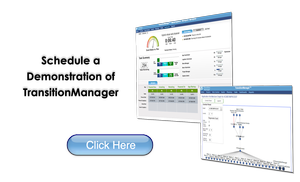The EU General Data Protection Regulation (GDPR) requirements were laid out in 2017 and just become a reality last month. As the May implementation date loomed, there has been much discussed about the impact of the pending legislation. But what seemed to be missing from the conversations was how IT will manage yet another variable when implementing hybrid IT strategies where hosting and service delivery is more federated and dynamic. In the complex environment of hybrid IT, you need to either know the blast radius when there is a data breech so you can make appropriate notifications and corrective actions. Conversely, when you add additional infrastructure, you must also account for any impact to existing applications and services. GDPR did not create these problems – these already existed in mixed physical, virtual and cloud environments.
As organizations grapple with this challenge, it reminds me of a book I read several years ago, The Checklist Manifesto: How to Get Things Right, written by surgeon and celebrated author, Atul Gawande. In the book, Dr. Gawande makes the case that, despite the expansive information available thanks to technology, failures continue to occur, whether in his health care field, in finance, government or the legal field. And Dr. Gawande believes that the reason is simple:
“Avoidable failures are common and persistent, not to mention demoralizing and frustrating, across many fields – from medicine to finance, business to government. And the reason is increasingly evident: the volume and complexity of what we know has exceed our individual ability to deliver its benefits correctly, safely and reliably. Knowledge has both saved us and burdened us.”
He proposes that perhaps the best way to ensure we avoid failures is to recognize that the sequence and order of tasks really matter and to manage this, you need to methodically follow proven and repeatable steps – a checklist approach. However, the challenge with IT is that the environment is constantly changing with new services being added, new infrastructure and even new architectural approaches for resiliency. The checklist cannot be isolated and rigid. The checklist must be dynamic, current and managed in real time across many different roles and responsibilities in the organization.
Here at TDS, we help organizations transform their complex IT environment to new cloud, platform, application and data centers while reducing project risks and costs. Through the hundreds of migrations that we have done over the past 16 years, we’ve learned important lessons about the criticality of mapping all servers, applications and their interdependencies and then sequencing the tasks to build a successful migration plan. To capture this proven process, we invented software – a sophisticated form of the checklist Gawande recommends – to capture and visualize all the environment data and confirm their accuracy, identify dependencies, create interactive runbooks, and generate important progress dashboards. It offers our clients access to this proven, step-by-step process for managing complex and time-sensitive migrations and eliminates the headaches of working with disparate tools and static spreadsheets. Maybe even more important, having a single source of information eliminates the risk of missing key applications and dependencies and helps cut through the noise to focus on the details that are necessary to make good decisions.

